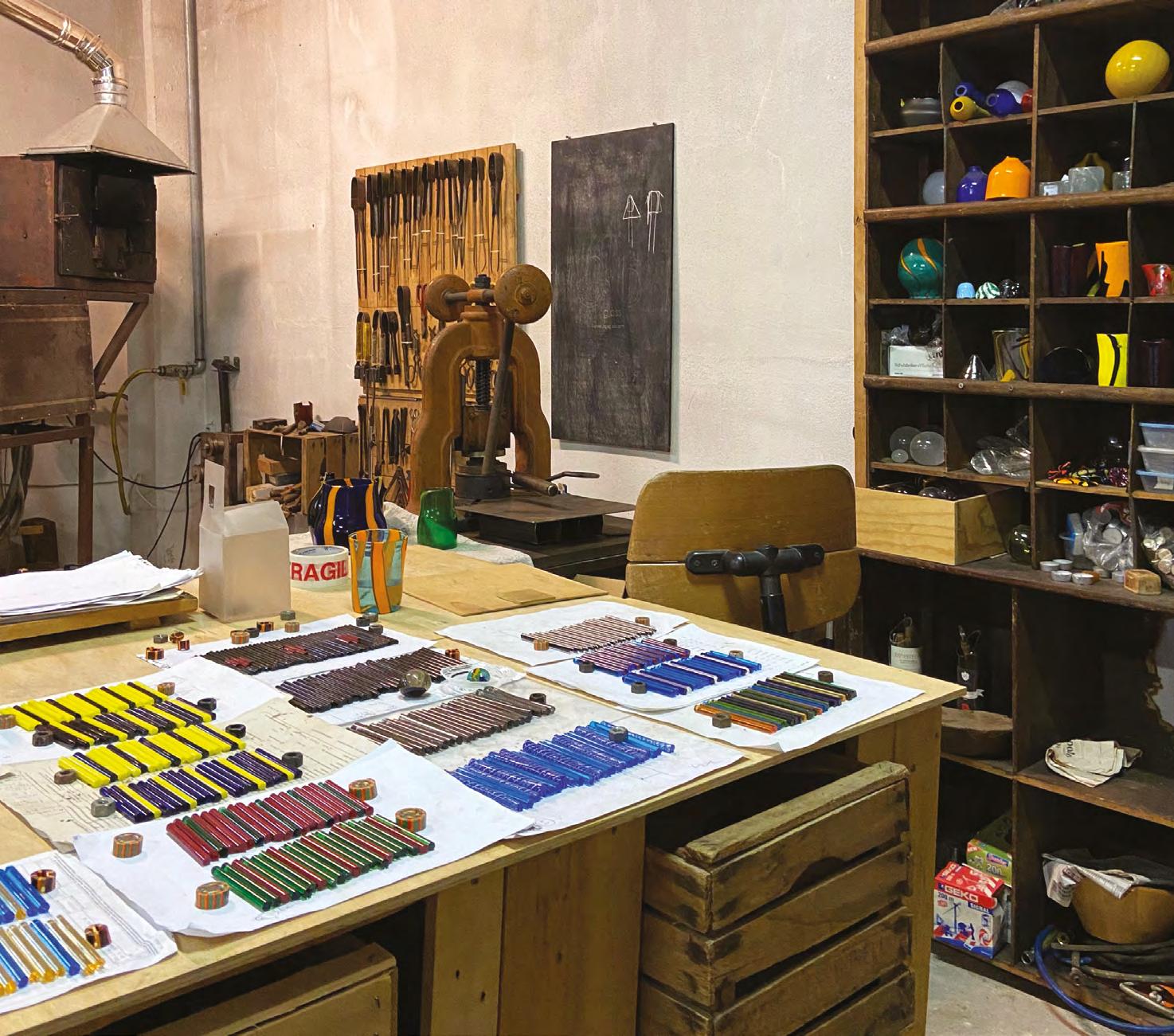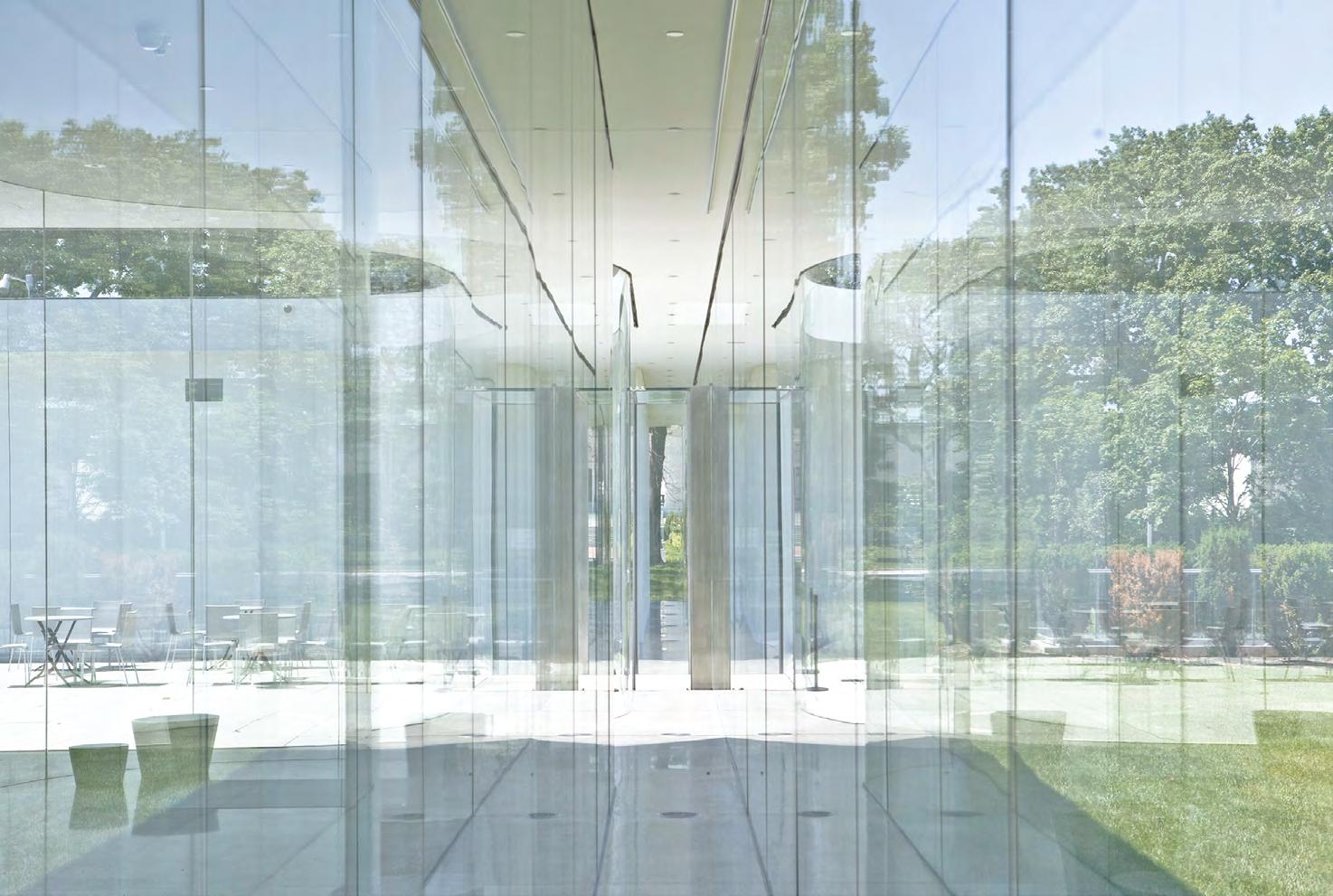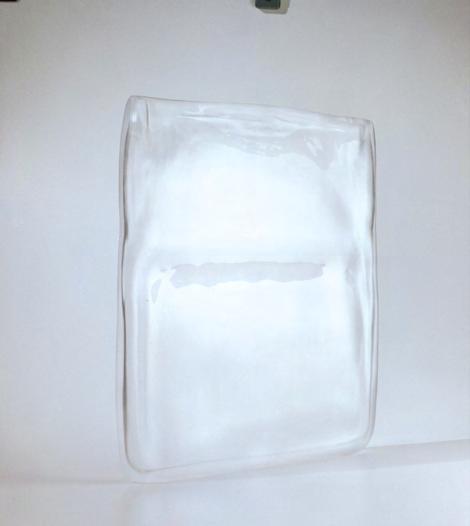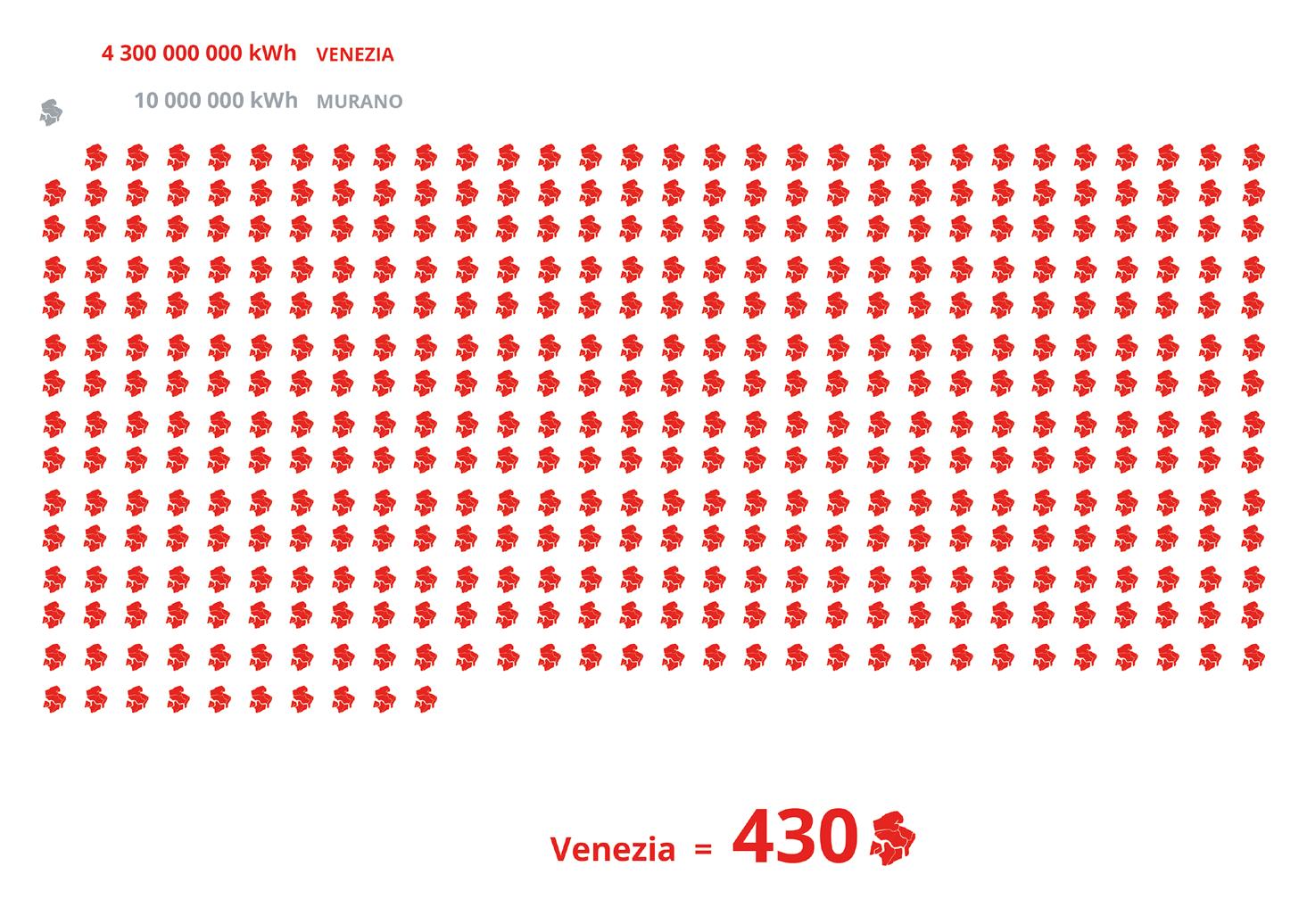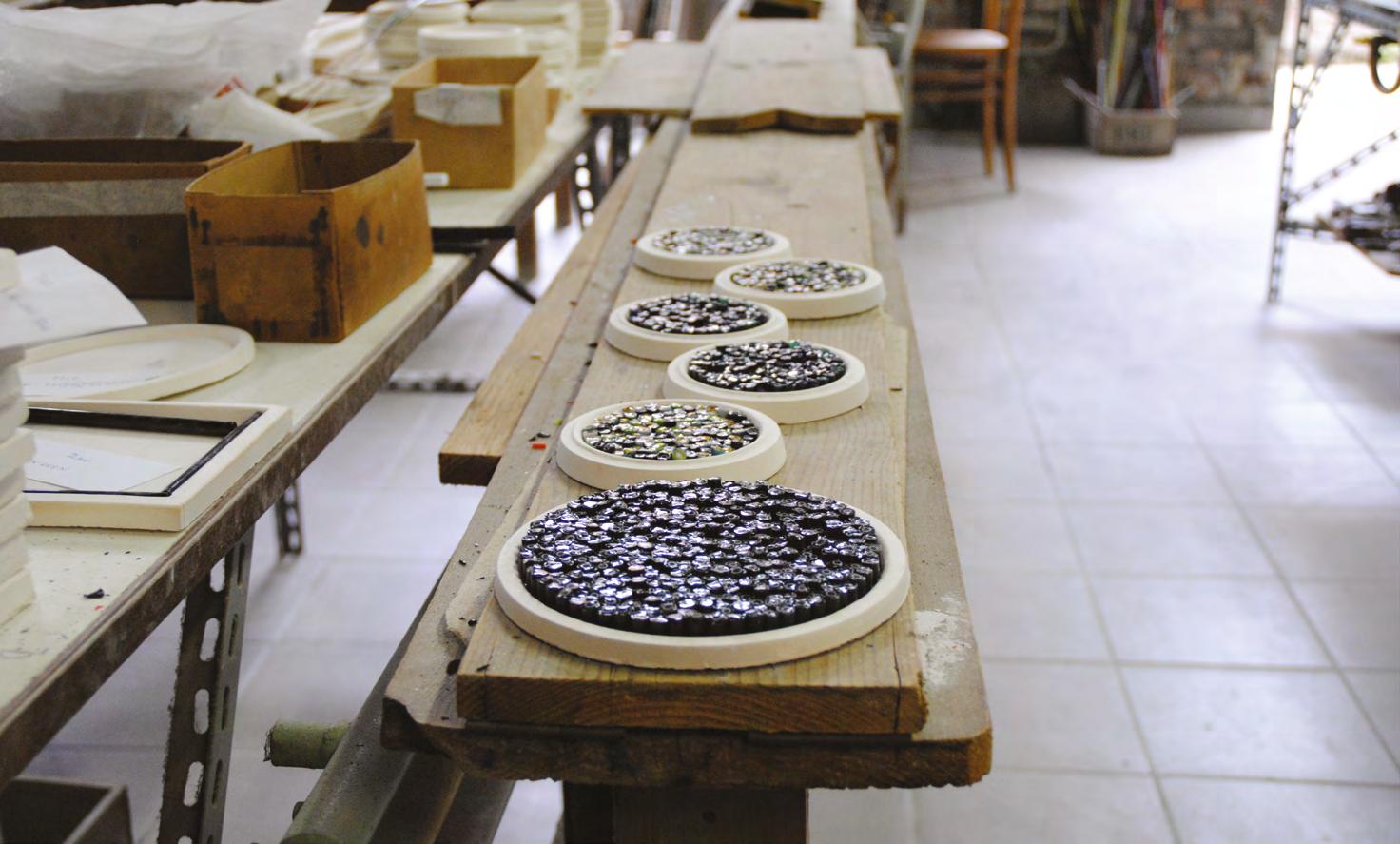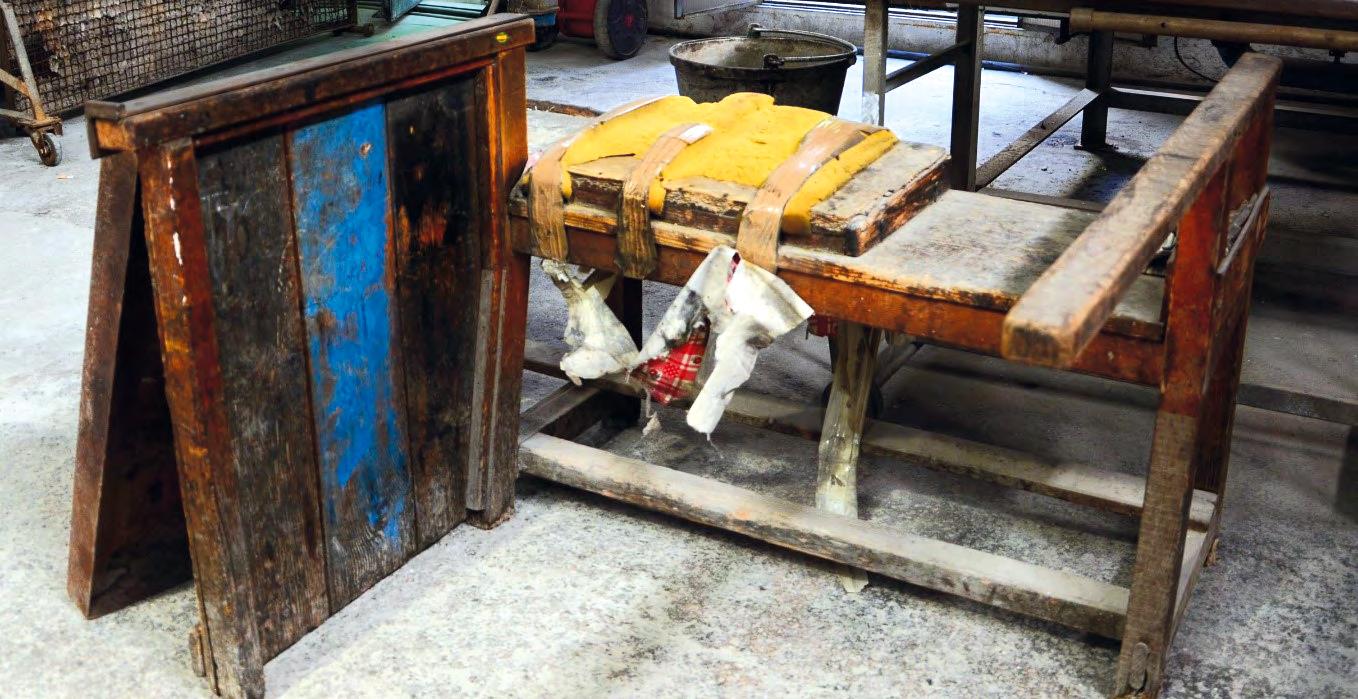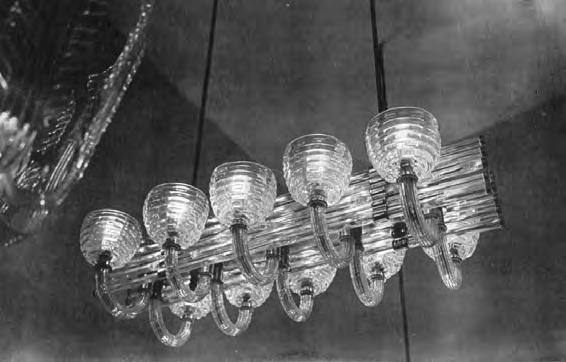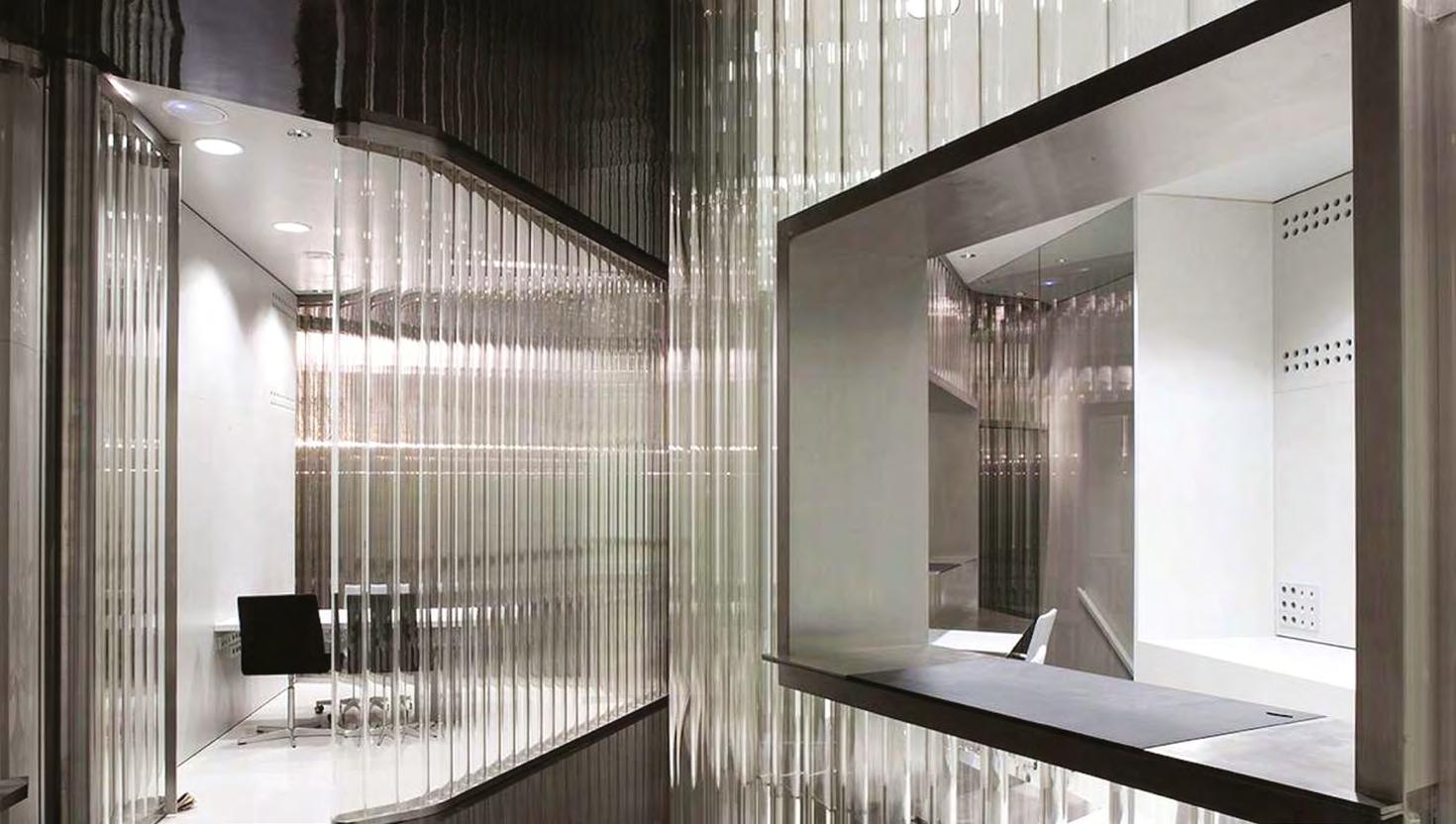
12 minute read
Glass Future Lab. Murano glass production and digital
Glass Future Lab. Murano glass production and digital manufacturing: possible relationships in a future scenario
ROSA CHIESAA, RICCARDO BERRONEB, LUCA COPPOLAC
KEYWORDS: DIGITAL MANUFACTURING, FLEXIBILITY, 3D PRINTING
Starting from the Glass Future Lab project (Glass Week 2021), the contribution proposes a reflection on the theme of the possibilities of intervention in the traditional process of manufacturing glass artefacts. The aid of digital manufacturing is taken into consideration in order to respond to the needs of the production economy, to facilitate certain assembly phases and to accommodate the increasingly stringent demand for product customisation. The project reversing some of the processing phases, opens up a series of important considerations, some related to the opportunity, even conceptual, of combining glass and plastic material – in a sort of unprecedented counterpoint – others of broader scope, around the future of a glass sector, the art glass sector, which suffers from historical and inherent immobility. Imagining new ways to hybridise production processes therefore means, beyond the purely technical aspect, thinking about training projects aimed at creating new professionals to be included as professional figures in the sector and dreaming of a future that stems from continuity with the sector’s historical legacy and its topicality.
A Department of Design, Università Iuav di Venezia, Venice, Italy. B Faculty of Design and Art, Free University of Bozen-Bolzano, Bolzano, Italy. C School of Architecture and Design, University of Camerino, Ascoli Piceno, Italy.
Design practice: intervening in the process
Intervening in the traditional process of designing and producing artefacts is a theme repeatedly addressed in the field of design, since it is precisely in these phases that the contribution of technical and conceptual innovation takes place, which opens up new results-products that are also innovative from an aesthetic point of view.
Intervening in the process does not have an unambiguous meaning, especially when this intervention concerns the hybridisation of techniques or the introduction of unprecedented gestures that pertain to purely artisanal areas. An original combination of craftsmanship and design is linked, for example, to the well-known reflection on the ‘variegated series’, explored by Gaetano Pesce1 (who also uses materials other than glass) in his experiments or by Rei Kawakubo, who has emphasised, in fashion design – among many conceptual dualities – the tension between the concepts of seriality and unique work, between standardisation and customisation, reflecting on the potential of the random but planned intervention that can give uniqueness to a mass-produced item (Bolton, 2018). Certainly also historically, the same theme was addressed in the specific field of Murano glass, which will be the subject of the contribution here, when Sergio Asti designed the Marco vase (Cappa, 1989), made by Salviati in 1961, winner of the Compasso d’Oro in 1962. Beyond the mere formal definition of the object, the project acts on the process –- with a hot intervention – considering the natural propensity of glass to assume natural ‘random’ configurations due to weight and gravity. In this case, it is a design that respects the specific nature of the material and its variable behaviour within the process.
If these examples can be useful to clarify one of the interpretations of intervening in the manufacturing process, the project that will be exhibited here investigates a further meaning of this intervention, introducing digital manufacturing within the process, but always moving in the direction of managing the dichotomy between standardised object and customised work (Antonucci, 2016).
History and recent events
The reference context in which to read the novelty of the Glass Future Lab project proposal, and its potential developments, is certainly linked to the evolution or static nature of the way glass is designed and produced today, to the consequent commercial implications and, more generally, to the urgent question of the future of the Murano glass sector.
For years now, the Murano glass manufacturing industry as a whole has
1 For more on the subject of the variegated series, a theme that is also much explored in art, see the volumes by Carlo Martino and Anty Pansera in the bibliography.
Fig. 01 2021 - Glass Future Lab at Fondaco dei Tedeschi. M. De Fina
been experiencing a slow decline, partly due to mechanisms that are difficult to counter locally, globalisation and delocalisation processes, increasingly high production costs, the economic crisis, and the systematic reduction of reference product sectors, which have cyclically characterised the history of the glass sector, as can be seen from the rich literature on traditional glassmaking and the specific surveys on the sector and the artistic glass district carried out in more recent years (Chiesa, 2019).
The scarcity of economic resources available to nurture a pathway built on research and development, the lack of dialogue with institutions (now fortunately initiated with the successful Glass Week event) and a poor understanding of the changed socio-economic conditions on the island have led, together with the effect of the COVID-19 pandemic, to a violent acceleration of the crisis in the glass industry, leaving all the problems and contradictions that have characterised recent decades to emerge abruptly.
While it is certainly true that the very recent energy crisis – as in the 1970s – is at the root of the worsening/closure of many local activities, and that, more generally, the environmental problem is becoming more and more pressing (considering that Murano glass is not recyclable) it is, in our opinion, legitimate to envisage a future for the Murano glass industry that envisages multiple responses, as multiple is the configuration of the industry.
Project: the premises
As designers with the AUT Design Collective group, founded in 2011 by Riccardo Berrone, Luca Coppola and Federico Bovara, we have tried over the years to come up with answers based on our background and skills, placing our research within that area of intervention represented by the relationship between design and mouth glass production.
In some ways, Murano is a sector with similar characteristics to other Italian production districts understood “as the natural offspring of a tradition of craftsmanship”: the high manual skill of its operators, a savoir faire rooted in the past, a specific geolocation, a fruitful link, recognisable and celebrated even today, with a certain way of conceiving design.
The design reflection has therefore focused on the redefinition of the relationship between design and production of Murano glass, an emblematic area of a relationship between the world of design and the world of ‘standardised’ artisan production which, especially in Italy, has given rise to happy examples of Made in Italy excellence.
Thanks also to the experience gained over the years within this sector, for example in the long collaboration with the Salviati company2, we have repeatedly posed the question of “where to intervene”, at what level is it permissible and possible to intervene in the phases of a production process without distorting it, but by planning punctual, circumscribed interventions that aim, if not to innovate, at least to propose a sustainable alternative to the state of the art.
Glass Future Lab
Presented at the Fondaco dei Tedeschi on the occasion of Glass Week 2021, the project Glass Future Lab starts out from a consideration of a peculiarity of mouth-blown glass production: its flexibility, understood on the one hand as a characteristic that the designer must traditionally possess in order to share the realisation of his project with an interpreter (the master), but flexibility also in relation to the material glass, which must first be known and ‘indulged’ in its nature, as Semper suggested.
The process imagined with Glass Future Lab, which envisages the use of digital manufacturing, is economically very costly and not advantageous when applied to large production batches, but is instead interesting when production numbers become smaller and customisation a necessity.
In the realisation of complex projects, e.g. the production of a lighting system consisting of several glass components of different shapes, connected together, the difficulty to be overcome lies not so much – or not only – in the
2 More at: https://98800.org/ (last accessed September 2022).
realisation of the glass mould, but above all, in being able to ‘force’ it to conform to standardised joint elements prescribed by stringent safety standards.
The risk of starting a production process that proceeds by trial and error (the possibility of testing is reduced by economic reasons) with the aim of refining the moulds until they fit perfectly into the joint, brings with it a high percentage of unplanned waste, which translates into a significant increase in costs, and equally into the production of non-recyclable waste (Murano glass waste is classified as ‘special waste’) (Coreve, 2021).
The reflection around the theme of the possibilities of intervention in the traditional process of glass manufacturing led us to think of digital manufacturing as a solution to get out of some impasses: • accommodating the low propensity of the Murano masters towards serial production; • address production economy requirements (to reduce waste, albeit relatively small numbers); • facilitate certain assembly phases; • respond to the increasingly stringent demand for customisation of products.
The project, which finds an indispensable support in digital manufacturing, stands at a great distance from the world of Murano but, paradoxically, shares with this traditional mode of production precisely the theme of flexibility. Digital manufacturing – be it 3D scanning, 3D printing, laser cutting, CNC machining, etc. – allows almost infinite customisation. What’s more, it totally frees the production process from any idea of standards, putting the completion of the variation back into the hands of the designer, or the person making the digital model.

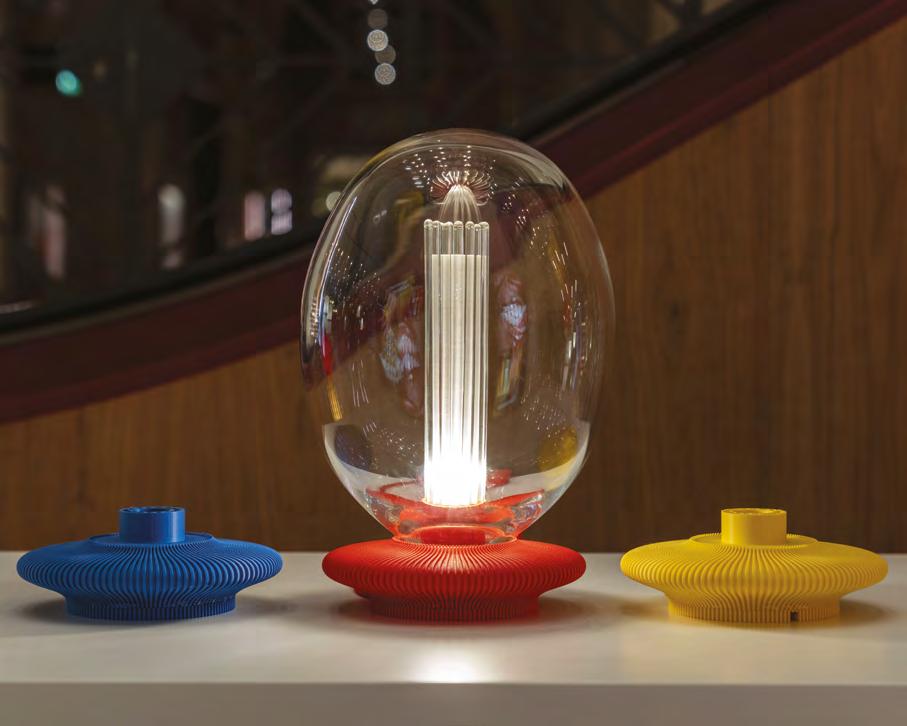
Fig. 02 3D printed element that perfectly fits with the glass object, previously manufactured. AUT design collective Fig. 03 One of the result of Glass Future Lab project. M. De Fina


Figg. 04 and 05 2021- Glass Future Lab windows installation (with identity poster) at Fondaco dei Tedeschi. M. De Fina
Our design proposal therefore introduces a reversal of perspective and production phases: contrary to what is usually the case, it is no longer the glass (hence production) that has to adapt to a previously defined project, but it is the project that, once production is closed (and the glass artefact with its imperfections is obtained), flexibly develops every detail and subsequently designs and starts the production of subordinate components (Figure 02).
Returning to the previous example of the lighting system, given an outline design, in a first phase the production of the glass components is started, leaving the master the possibility to move comfortably with respect to the variation/imperfection inherent with handcrafted production.
In a second phase, the glass elements are digitally scanned to obtain threedimensional models that can be worked on with the 3D printer. By analysing the three-dimensional models, it will be possible to measure the thicknesses (not always regular) of the individual elements in order to define the exact design of the joint or other subordinate elements that will be produced using digital manufacturing and facilitate the assembly phase.
In this way, by reversing the traditional processing and assembly phases, the original design is realised through the support of digital technology, minimising the margin of error and glass waste (Figure 03).
A process such as the one just described, being flexible, easily responds to the demand for customisation that is increasingly becoming a distinctive feature of exclusive projects, conceptually crossing the evolution of contemporary design towards forms increasingly hybridised with art and the unique piece (Figure 04 and 05).
Conclusion
The Glass Future Lab project, which was also accompanied during its official presentation by a discussion-reflection on the future of glass, and which thus sets itself the goal of rethinking the production process by reversing certain processing stages, opens up at the same time to a series of important considerations that we can summarise here (Barovier Mentasti, 1982; Barovier,1999; Deboni, 1996; Dorigato, 1984; Gasparetto, 1958; Mariacher, 1954): • a first theme concerns the semiotic and aesthetic significance of the coupling of glass and plastic material (the joints made in 3D in the example); • what may sound like ‘heresy’ to some, may instead reveal itself (as experimentation in fashion design teaches us) to be a daring path with as yet unknown results.
Similarly, the topic of hybridising production processes, particularly the traditional glassblowing process with that of digital manufacturing, can potentially open up new avenues to respond more sustainably to market demands.
A third consideration, of central importance, concerns the opportunity offered by these new hybrid approaches to overcome the traditional separation between ‘handmade’ and ‘machine-made’ by placing this notion in the contemporary context and opening up the classical dual relationship between designer and performer to the formation of new professional figures, from the technical operator to the digital craftsman who can interact with masters and designers (Micelli, 2016).
Naturally, these observations are part of the broader scenario of reflection on the future of a sector, that of artistic glass, which suffers from a historical and inherent immobility and is going through a deep crisis, but which has always found the strength to historically regenerate itself and to ‘revive’, to show itself antifragile.
References
Antonucci, R. (2016). Arte e/o design. Milano, Udine: Mimesis. Barovier Mentasti, R. (1982). Mille anni di arte del vetro a Venezia. Catalogo mostra Palazzo Ducale Museo Correr, 24 luglio- 24 ottobre 1982. Venezia: Albrizzi. Barovier, M. (1999). Il vetro a Venezia. Milano: Federico Motta. Becattini, G. (1998). Distretti industriali e made in Italy. Le basi socioculturali del nostro sviluppo economico. Torino: Bollati Boringhieri. Bolton, A. (2017). Rei Kawakubo Comme des Garçons: Art of the In-Between. New York: The Metropolitan Museum of Art. Cappa, M. (1989). L’Europe de l’art verrier, des precurseurs de l’art nouveau à l’art actuelle 1850-1990. Bruxelles: Mardaga. Chiesa, R. (2019). Carlo Moretti: vetro e design. Venezia: Marsilio. Coreve, il Consorzio nazionale per riciclo e recupero di imballaggio in vetro (2021). Rapporto 2021 su raccolta e riciclo del vetro (online). In: https://coreve.it/rapporto-2021-su-raccolta-e-riciclo-del-vetro/ Deboni, F. (1996). Murano 900: vetri e vetrai. Milano: Bocca. Dorigato, A. (1984). Storia del vetro (ed. italiana). Novara: De Agostini. Gasparetto, A. (1958). Il vetro di Murano dalle origini ad oggi. Venezia: Neri Pozza. Mariacher, G. (ed.) (1954). L’arte del vetro. Milano: Arnoldo Mondadori. Martino, C. (2007). Gaetano Pesce. Materia e differenza. Venezia: Marsilio. Micelli, S. (2016). Fare è innovare. Il nuovo lavoro artigiano. Bologna: Il Mulino. Pansera, A. (2013). Bracciodiferro. Gaetano Pesce-Alessandro Mendini 1971-1975. Catalogo della mostra (Milano, 4-14 aprile 2013). Milano: Silvana Editoriale.

